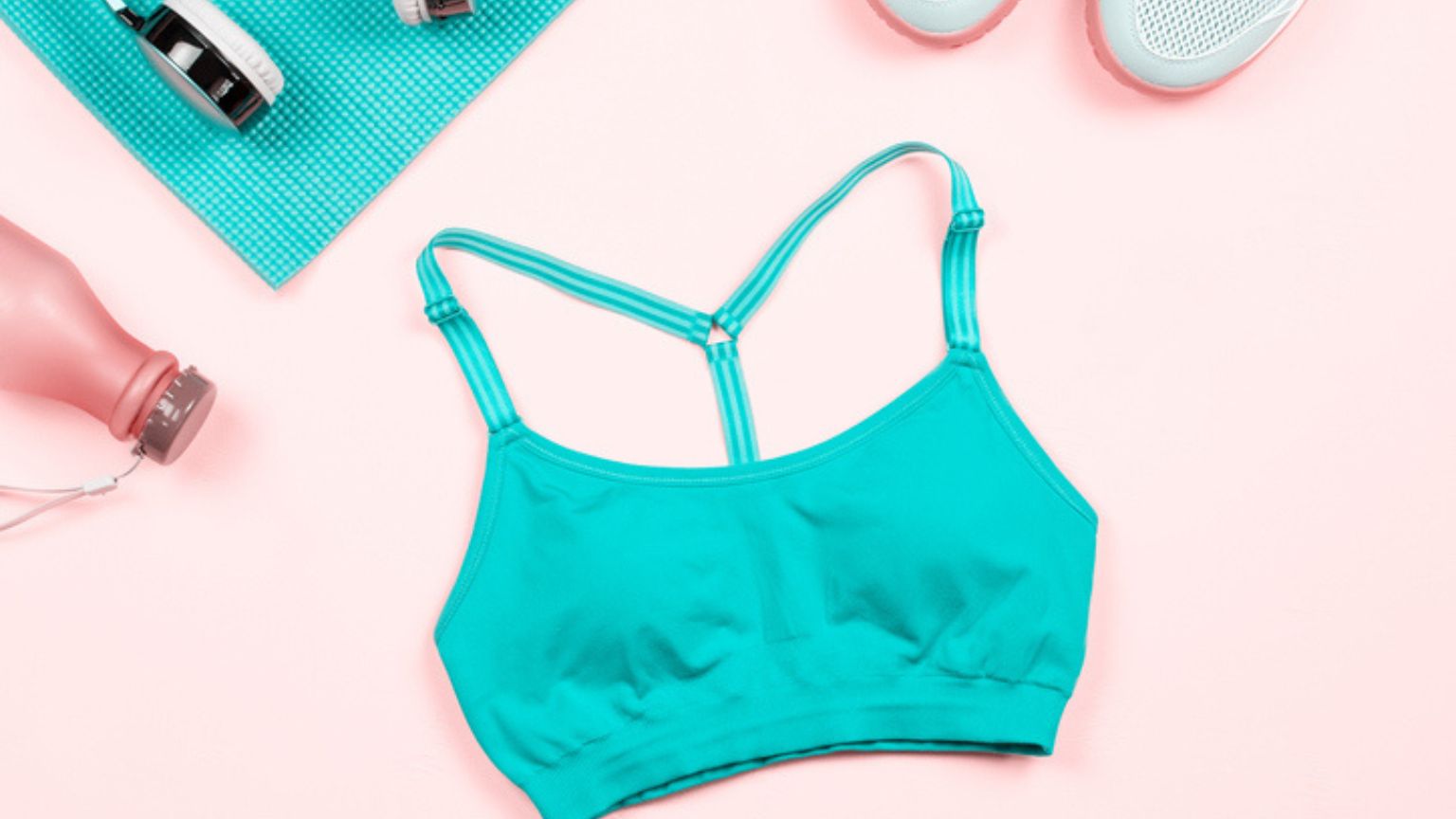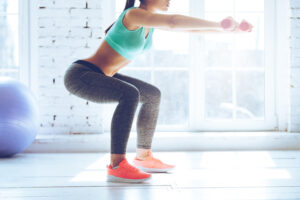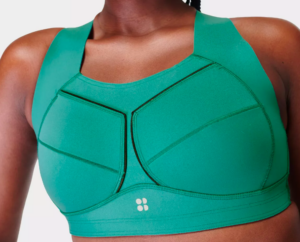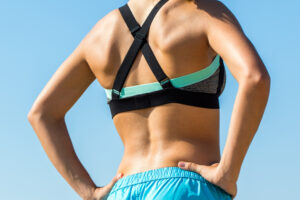Healthista sat down with design manager of Sweaty Betty Sarah Platts and renowned plastic surgeon Dr. Paul Banwell to discuss the importance of wearing a supportive sports bra whilst working out and the drawbacks for when you don’t
If running is your exercise of choice, then you may be aware of the post-workout tenderness that hits just after finishing a 5k. Cue the sore feet and impending shin splints.
Which is why fitness experts stress the importance of choosing the proper running gear to aid your fitness journey. From arch supported running shoes to leggings that don’t fall down whilst on a morning jog, there are many elements to ensuring that you are properly assisted during a sweat session.
it is important to choose a supportive sports bra whilst performing high-intensity training
But for women, there is an added factor that we may not think about when choosing our sports kit – our breasts.
We wanted to find out why it is important to choose a supportive sports bra whilst performing high-intensity training or training for a marathon. So who better than to dispel between the facts and the myths other than a renowned plastic surgeon and a sports bra designer from major athletic sportswear company Sweaty Betty.
Here’s what they had to say…
Jogger’s Breast
If you’re anything like me, I usually go for style over comfort when it comes to sports bras, which according to Dr. Banwell, can be detrimental to breast health as the ‘importance of a sports bra cannot be underestimated.’
A common occurrence with wearing the wrong sports bra can lead to what is known as Jogger’s Breast, which is the continuous movement from running or bouncing of the breasts, resulting in damaged breast tissue.
the effects of this movement without support can cause women’s breasts to permanently droop or sag
Although we think of our breasts moving up and down as we run, they also move in a figure-eight motion which can cause stress on our breast tissues. Since women’s breasts are held by thin bands called Cooper’s ligaments, the effects of this movement without support can cause women’s breasts to permanently droop or sag.
READ MORE: London Marathon inspired? 8 top tips to get into running
‘Cooper’s ligaments are found under the skin of the breast, through and around the breast tissue. They connect to the tissue surrounding the chest muscles. Cooper’s ligaments maintain the shape and structure of your breasts and help to prevent sagging. They help maintain their contour and keep them in position’, says Dr Banwell.
an unsupported G cup can bounce up to 14cm while an A cup can go up to 4cm
In other words, repetitive high impact activity can contribute to back pain, sagging, and stretching of these thin ligaments.
‘If you do not wear a sports bra, an unsupported G cup can bounce up to 14cm while an A cup can go up to 4cm,’ explains Dr. Banwell.
Long Term Affects
There’s a common myth that if you don’t wear a bra, your breasts will stay perky as the ligaments become used to the tension which maintains the shape of the breasts.
However, these ligaments are delicate, therefore not giving your breasts the proper support during any sport activity can have a detrimental impact.
If you do not use a sports bra, it can lead to pain, soreness and discomfort
No matter the size of your breasts, Dr. Banwell advises everyone to wear a sports bra during a workout.
‘If you do not use a sports bra, it can lead to pain, soreness and discomfort while working out – which can also lead to bending forward due to the weight of your breasts,’ reveals Dr Banwell.
READ MORE: 20 summer essentials we can’t live without
Here’s what Dr. Banwell says are the common long-term affects:
- sagging
- poor posture
- sagging or drooping
- stretch marks
- back pain
- headaches
‘Simultaneously, consistent regular exercise has been shown to reduce the risk of breast cancer’, says Banwell.
Dr. Banwell reiterates the importance of choosing a sports bra for the type of workout you are performing, as sports bras are constructed completely differently to regular bras. So working out in a normal bra is a big no from the plastic surgeon.
‘You can get high-impact sports bras as well as low impact sports bras, so it’s important to make sure you get the right type for your sports activity,’ says Dr Banwell.
For instance, if you are performing a low-impact workout, such as pilates, it’s okay to opt for something that has less structure, padding, or underband support.
However, for high intensity workouts or running, it’s always advised to choose a bra with the above elements for maximum support and minimum damage.
Case in point – choosing the right sports bra is a key component to protecting your ta-ta’s whilst exercising. So how do you choose the right bra for you?
#1 Support over style
Just because you should choose a sports bra for its support, does not mean it has to lack in style.
Insert the newly designed Zero Gravity Bra from Sweaty Betty, which was designed by Sarah Platts, who has over 10 years of experience in designing underwear, swimwear, and sportswear for top name brands.
Sarah states this is why sports bras like this one are great for high-impact or cardio workouts, as the sports bra needs to have bonding in the areas where the breast tissue sees the most movement.
80% of women don’t know their actual cup size
‘The right kind of bonding in sports bras can help maintain a constant kind of control of that movement, without it being too harsh or creating red marks where you typically tend to get chaffing’, says Platts.
#2 Choose the right cup size
In addition to this, Dr. Banwell agrees that when it comes to picking a sports bra, the best kind you can choose is one that has a cup size over standard sizes (e.g. small, medium, large).
As 80% of women don’t know their actual cup size, this can create room for damage to the breasts to occur if the proper sports bra isn’t being used.
Sweaty Betty’s Zero Gravity bra offers a hybrid style, with a standard bra like clasp at the back and adjustable twin straps so that it can be tweaked to fit your body.
READ MORE: 8 athleisure brands we’re loving right now
Encapsulated type bras like this are a feature that Dr. Banwell says women should be looking for in a sports bra, as hybrid constructions with wide adjustable straps offer the highest level of support.
‘Encapsulation means that the bras are designed with built-in cups supporting each breast individually. They do not compress the chest and feature clasps at the back or zippers at the front,’ says Dr Banwell.
working out in a normal bra is a big no
Meaning, a sports bra should be tighter than your ordinary bra, but should not make your boobs look like you’ve just had a non-surgical breast lift, as it can give a false sense of support.
‘Over compression can give the illusion that you’re being supported because your breasts are moving less, but that’s actually not always the case. It can really be that you are stopping movement in one direction but increasing it in another’, says Platts.
#3 Make sure your sports bra has an underband and thick straps
In comparison to a new pair of shoes, the right sports bra may feel tight at first, but needs to be warmed up to mould to your body. That’s why women should look for sports bras that have an underband and are quick dry materials, such as the Zero Gravity Bra, which doesn’t stretch out after multiple uses.
Dr. Banwell also suggests finding a bra that has thick solid straps, rather than criss cross or racer backs, as this tends to offer more support than a traditional shaped sports bra.
READ MORE: 18 best plus size workout clothes
Like this article? Sign up to our newsletter to get more articles like this delivered straight to your inbox.

























































